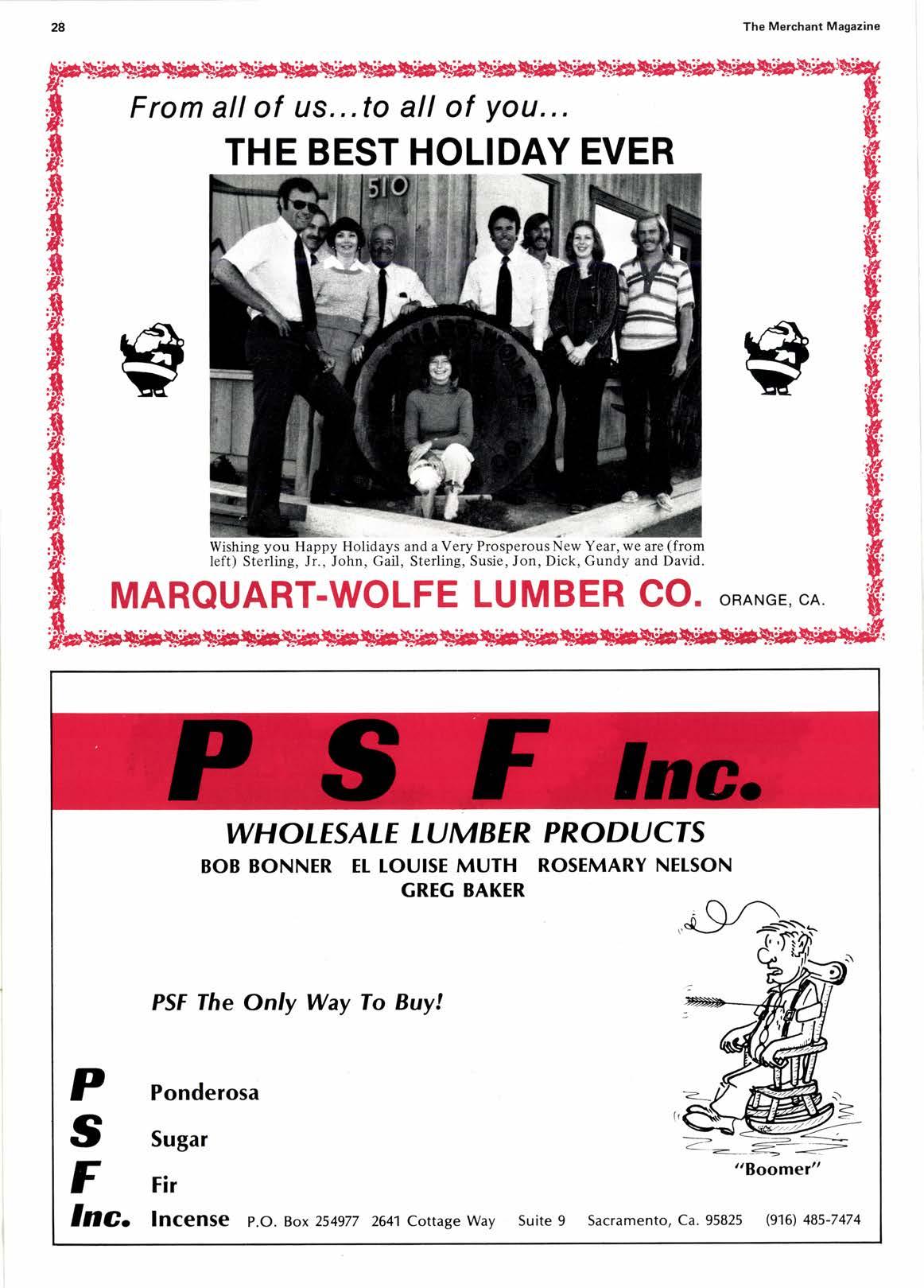
2 minute read
Another "Norm al" Yeaft
By Donald H. Gott Executive Director Fine Hardwoods/American Walnut Assn
THE members of the Fine HardI woods/American Walnut Association have described 1976as "perhaps a normal year." New orders for lumber and veneer were received on a rather steady basis. Shipments were also steady. Business, ofcourse, could have been better, but it was sufficient to permit full employment at most mills. Log supplies were adequate, but timber owners still needed to be encouraged to do more timber stand improvement work, so the quality of the timber being grown could be improved.
Niebling
(Continued frorn page 15 )
1911 ln our view, the time lag in any credit crunch means that if this occurs. it will have a much stronger effect on 1978 than on 1977.
On balance Ihen,1917 looks pretty bright for lumbermen. There are really only two negative factors at this point in time.
First, the inventory of unsold homes is rising slightly after months of steady decline. It bears watching over the next six months or so.
Secorrdly, housing wasn't doing all that well last spring. Subsequently, North American embarked on a study of how it could be stimulated. The
We.'expanded our efforts in the hardwood promotion field in l976by embarking on a special promotion
Story at a Glance
Caution marks Fine Hardwoods/American Walnut Assn. and its members . housing starts, furniture purchases and politics are keys to next year.
National Association of Homebuilders have been doing the same thing. The politicians have decried the low level of activity of this basic industry. While all this has been going on, housing has continued to improve to the point that there is a question of the advisability of stimulation. A tax treatment or a government interest rate subsidy now could very well mean boom times for 1971 and a resulting downturn in 1978. Hopefully, the industry and government will move carefully in this area during the first part of the new year.
The election of James Earl Carter to the Presidency indicates that we have an electorate which prefers government activism. It remains to be seen just how quickly President Carter program telling the story of the character marked hardwoods. can implement his vision of what our country should be doing economically. In our view, a more active government will probably not take effect in 1917 but could be a factor in 1978. Certainly Carter would likely move faster than Ford if there was a substantial downturn in housing. The likelihood of lower interest rates and a potentially higher inflation rate exists with a Democratic administration. If the latter occurs, we can also expect some sort of controls, selective or otherwise, by late 1977 or early 1978.
The real surprise of the last few months is not that real growth slowed but rather that the economy proved so resistent to shocks, maintaining a growth rate as high as 4% thtough summer and into fall.
The multi-family component of residential building at long last shows signs of coming to life: recent surveys indicate that the upward momentum in capital spending observed during 1976 will carry forward into 1977: and business will need to build inventories to meet higher sales volume.
To sum up, we can have healthy, broad-based economic growth n 1977l. indeed the foundations are in place for a sustained expansion matching that of the 1960 s. The main ingredient required is just a little more patience in letting the economy work through its problems.
The use of veneer and lumber lines containing such natural markings into our promotional activity has blended nicely with the current ecological trend to use more-wisely, our natural resources. After all, as much as twothirds of the many trees grown contain the character marked grades. The socalled upper or cleaner grades of veneer and lumber have always represented the smaller percentage of the total trees harvested.
The FH/AWA and its members are cautious about 1971. Housing starts and furniture purchases hold the keys to the next year, and last, but not least, the political horizon.
Five years from now, 1976 will probably be judged a "normal" year for wood products demand. An increase of 10-12% in demand in 1977 should make it a very good year. If that is (Please turn to page 45)












